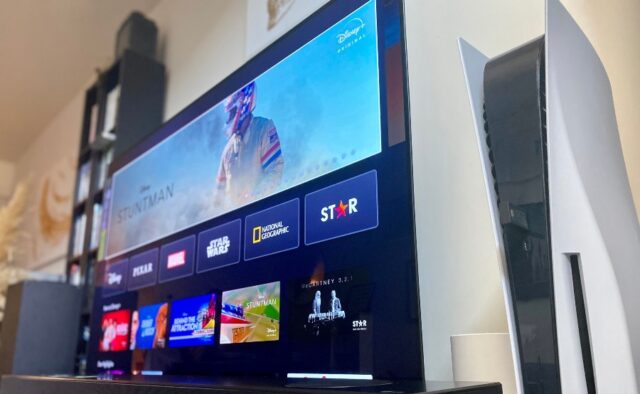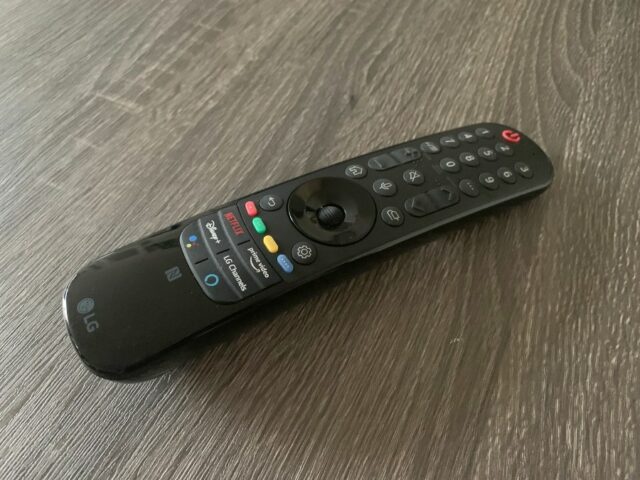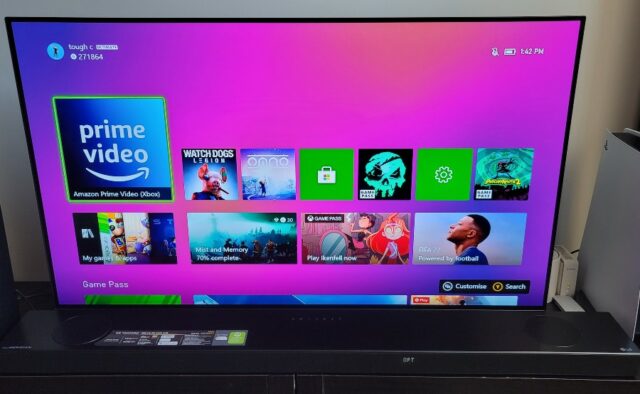Finding a good television is possibly as important as finding a good bed. On top of that, when you find that television that captivates you, you will never want to turn it off. This is exactly how I felt when I started using LG OLED C1 (OLED48C1).
With streaming services now prioritizing 4K HDR content and the new generation of consoles in full swing, supporting up to 4K @ 120FPS, a high-caliber TV is becoming increasingly essential. LG’s 48-inch OLED C1 2021 covers exactly what you need to get the best possible UHD OLED display, while also presenting it in a modern and no-nonsense design.
The C1 comes with a higher price tag, and its 48-inch size should be noted. That said, if those concessions fit your budget and living space, there are very few reasons why the LG C1 shouldn’t be factored in when upgrading to a new display.
Breaking the C1
By unpacking the 2021 OLED C1, it’s hard to say that LG has made a radical leap in design compared to last year’s CX. This isn’t necessarily a bad thing, especially if it hits LG’s C series like new. The C1 is quite light for its size. It is demonstrably thin, to a point that is almost scary. The thickness of its screen is less than that of a smartphone. The bottom half is where LG houses all the internals, ports, and power supply, which of course affects the thickness when looking at the C1 from the side. However, it is still impressive to see how thin LG is capable of designing its latest marquee display.
Making sure to the bottom, LG continues to use the simple but effective silver base mount. I am a huge fan of this stand not only for its appearance but also for its practical use. It is my preferred mounting solution over the 3-point mounts used by other displays. In addition, the curvature of the base is used to bounce the sound from the C1’s speakers towards the viewer. You can of course mount the C1. From the front, the display is fairly minimal, with a barely noticeable bezel. So whether it is placed in a media center or on your wall, the C1 will fit comfortably into your living space without any hassle.
In ports and other bells and whistles, which of course is an attraction for many of us. The LG C1 does not disappoint. It has four, yes four, HDMI 2.1 ports. Since HDMI 2.1 is playing a big role in the new generation of consoles, having four at your disposal means you can connect your Xbox Series X, PlayStation 5 and still have room for two more devices that support 4K at 144Hz. Also, one of the four HDMI ports supports eARC / ARC. Additionally, the C1 has three USB ports, an RF tuner, optical digital audio output, and an Ethernet port. On top of all that, the C1 supports Wi-Fi and Bluetooth as expected.
Works like magic
The LG C1 OLED comes with the LG Magic Remote, which has become a staple in LG’s television realm. Powered by a pair of AA batteries, the LG Magic Remote has Bluetooth capabilities and has a built-in microphone for various voice commands via Google Assistant and Amazon Alexa.
Where the remote gets its “Magic” name is that it also has optional motion controls so you can select menu options as if you were using a Nintendo Wii. Truth be told, I’ve never fully committed to using the remote’s motion controls. Usually my brain uses the scroll wheel and directional pad for navigation by default. Additionally, the LG Magic Remote has four quick access buttons for LG, Netflix, Disney +, and Prime Video channels.
New TV, same operating system
Like the LG Magic Remote, the company’s WebOS is another staple of the television experience. For anyone familiar with LG TVs in the past and WebOS, this year’s improvements may seem minimal, but they do a lot for customization and ease of use. For the uninitiated, WebOS is the backbone of LG TVs. The power of the operating system gives LG screens a quick way to turn on the home screen, select various apps, and navigate through settings and outputs.
WebOS updates don’t reinvent the wheel this year. However, I was presented with a new home screen. It has more rows for customization, which was awesome. Because LG does not have to be committed to a single partner, WebOS integrates functions and applications from partners such as Amazon, Google, Apple, and more. Have access to build your home screen with the aforementioned apps, Apple TV +, and other of the more specialized streaming services available. You can also add useful widgets to your home screen like the weather, which the smart TV will track using your zip code.
Viewing experience
Without exception, the LG C1 OLED offered the best viewing experience that I have ever had with a smart TV. While the screen quality improvements are minimal, the OLED panel used in the C1 offers crisp and defined image quality when streaming 4K content or while gaming. The display also supports Dolby Vision, HDR10, and HLG, making it a complete model for your living space.
The LG C1 offers rich color contrast and deep blacks. While the 55-inch Samsung MU7000 UHD TV I’ve had for some time has served me well, the big improvements the C1 has in screen quality are evident. For comparison, my Samsung’s screen looks washed out and saturated. The C1 can display a more precise and defined range of colors.
This generation of consoles is really focused on 4K images while providing options for 60FPS and 120FPS. However, to get 120FPS, an HDMI 2.1 port is required to output 120Hz output. The C1 is a wonderful companion to the Xbox Series X / S and PlayStation 5 for this reason. LG has also used support for Nvidia G-Sync and AMD FreeSync to provide an unmatched viewing experience. On top of all this, I noticed that the C1 had surprisingly low input lag, which was phenomenal when playing more competitive games like Apex legends or Call of Duty: War Zone. LG has implemented its automatic low latency mode. When used, the screen will automatically adjust to your game mode when a console is detected.
The only noticeable downside I experienced when using the C1 during the day was glare. The screen alone emitted a great glow from the nearby window. This is not really a problem when the screen shows bright colors. But during dark screens, it is quite noticeable. On the other hand, when looking at night, the colors really come off the screen.
All the behind-the-scenes power comes from LG’s fourth-generation Alpha 9 image processor.
Final thoughts
I can’t help but recommend the C1 to anyone looking to substantially improve their center display. Whether it’s movie night, game night, or the ‘White Lotus’ presentation at Crave, the C1 has raised the bar on what a viewing experience on an OLED screen should look like.
All that said, the display is a high-end option on the market. Therefore, there is a high cost associated with C1. The 48-inch C1 typically retail sales for $ 1,800 CAD. However, the C1 is also offered in 55-, 65-, 77- and 83-inch models and can fetch a price tag of more than $ 9,500 CAD. If you’re transitioning from last year’s CX, the differences in image quality or layout are minimal. However, if you’ve been thinking about upgrading your 4K display for 4 years (or longer), the C1 should be on your radar.


